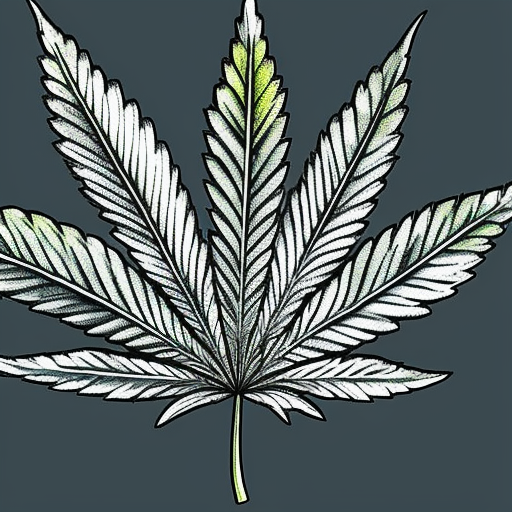
Yo, what’s up, it’s your boy Dan, and today we’re gonna talk about CBGA, also known as the ‘mother cannabinoid.’ CBGA is the precursor to all other cannabinoids found in cannabis and hemp plants, including the infamous CBD and THC. Without CBGA, none of these other compounds would exist. But did you know that CBGA might have some health benefits of its own? Let’s break it down.
CBGA is a cannabinoid, which means it’s one of the many active compounds found in cannabis and hemp plants. Its chemical structure is similar to other cannabinoids in that it contains carbon, hydrogen, and oxygen. Its exact molecular formula is C22H32O4, and it consists of a ring of carbon atoms attached to two long carbon chains, two oxygen atoms, and a carboxyl group (COOH). This carboxyl group makes the compound mildly acidic.
What makes CBGA unique is that it’s the precursor to all other cannabinoids. This includes CBD, THC, CBN (cannabinol), CBC (cannabichromene), and CBG (cannabigerol), among others. CBG and CBGA have a lot of similarities, as CBGA is just the acidic form of CBG. However, their chemical structure is slightly different since CBG doesn’t include a carboxyl group. The molecular formula of CBG is C21H32O2.
Now, let’s talk about the potential health benefits of CBGA. Keep in mind that current research on CBGA is limited, as most studies have been done in laboratories using cell samples or animal models. We also need more studies to understand how this cannabinoid could benefit the human body.
One potential benefit of CBGA is its anti-inflammatory and antioxidant effects. A 2013 study showed that another cannabinoid called CBG reduced inflammation and the formation of free radicals in the intestine of a mouse model of colitis (inflammation of the bowel). Another 2018 study confirmed CBG’s anti-inflammatory and antioxidant effects, suggesting that it could act as a neuroprotectant, defending nerve cells from harmful oxidative stress.
CBGA might also have benefits for diabetes. A 2018 study found that CBG and CBGA, along with CBD and CBDA, reduce the activity of an enzyme called aldose reductase that’s associated with many diabetic complications. Another 2019 study found that CBGA, CBDA, and CBG could help with the metabolism of lipids (fats), potentially benefiting patients with metabolic disorders like diabetes and dyslipidemia.
It’s important to note that CBGA is the precursor to other cannabinoids like CBD and CBDA. The process of transforming CBGA into CBDA relies on an enzyme called cannabidiolic acid synthase (CBDAS), which converts CBGA into CBDA. Cannabis and hemp plants produce all their cannabinoids in acid form, but with time and heat, these acids undergo decarboxylation, which converts them into their more active counterparts. Decarboxylation is necessary to convert CBDA into CBD, or THCA into THC.
CBGA biosynthesis is a complex process that occurs in the resinous trichomes of the cannabis plant. Trichomes are tiny glands that coat the plant’s buds and leaves, producing most of its active compounds. CBGA starts as a short-chain fatty acid called hexanoic acid in trichomes. An enzymatic reaction then converts it to olivetolic acid, which reacts with a compound called geranyl diphosphate. The enzyme CBGA synthase (CBGAS) then converts it into CBGA.
In conclusion, although CBGA doesn’t get as much attention as CBD or THC, it’s an essential component of the cannabis plant. CBGA is responsible for forming all other cannabinoids and might have some health benefits of its own, including anti-inflammatory and antioxidant effects. Keep an eye out for the latest cannabinoid research, as we’re likely to learn more about their potential uses in the future. Peace out.


Yo this CBGA got mad potential, for real. It ain’t gettin’ the shine it deserves but it might be the key to some dope benefits. Gotta keep an eye on it and see what it do.